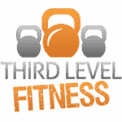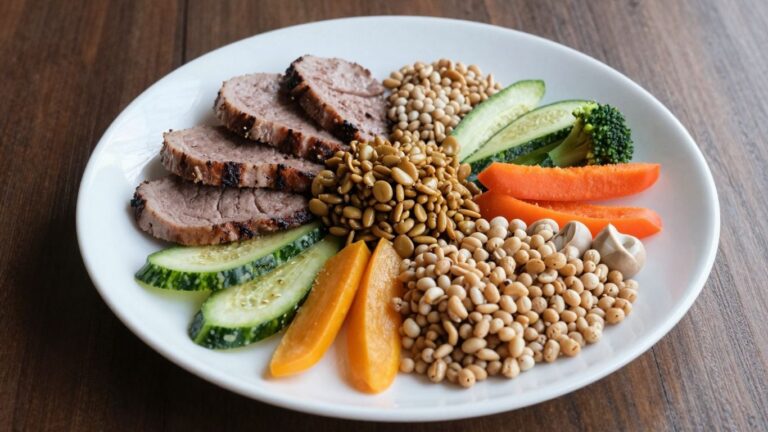Getting into weightlifting basics can feel like a lot at first. You see people lifting heavy stuff and maybe you want to do that too. But where do you even start? This guide is here to break down all the important stuff, from understanding what strength training actually is to making sure you’re eating right and not hurting yourself. We’ll cover the core movements, how to set up a simple plan, and why listening to your body is just as big a deal as lifting the weight itself. Let’s get you started on the right foot.
Key Takeaways
- Start with bodyweight movements to build a solid foundation before adding weights.
- Focus on compound exercises like squats, presses, and rows that work multiple muscles at once.
- Progressive overload, gradually increasing the challenge, is key to getting stronger over time.
- Proper form and warm-ups are non-negotiable to prevent injuries and get the most out of your workouts.
- Balanced nutrition, especially protein and carbs, along with adequate rest, is vital for muscle repair and growth.
Getting Started With Weightlifting Basics
So, you’re thinking about lifting weights? Awesome! It’s a fantastic way to get stronger and feel better overall. But before you grab the heaviest dumbbells you can find, let’s cover some ground. Understanding what strength training really is and where it came from can make a big difference in how you approach it. It’s not just about lifting heavy things; it’s about building a solid foundation for a healthier you.
Understanding What Strength Training Is
Basically, strength training, sometimes called resistance training, is any exercise that makes your muscles work against a weight or force. This could be anything from lifting dumbbells and barbells to using resistance bands or even just your own body weight. The idea is to challenge your muscles so they adapt and get stronger over time. It’s about making your body more capable. When you lift weights, you’re creating tiny tears in your muscle fibers. Don’t worry, that’s a good thing! Your body then repairs these tears, making the muscles bigger and stronger than before. This process helps improve your bone density, boost your metabolism, and can even make everyday tasks feel easier.
The History and Evolution of Lifting
People have been lifting heavy things for a long, long time. Think ancient Greece, where athletes would lift stones to prove their strength. Fast forward a bit, and you see strongmen in circuses in the 18th and 19th centuries performing incredible feats of strength. Over the years, lifting evolved from just showing off strength to a more structured approach for health and fitness. We went from lifting stones and crude weights to the sophisticated barbells, dumbbells, and machines we have today. It’s pretty cool to think about how far it’s come, from ancient rituals to modern science-backed training programs.
Key Components of Strength
When we talk about strength, it’s not just one thing. There are a few different types that work together:
- Maximal Strength: This is your ability to lift the heaviest weight possible for a single repetition. Think of a powerlifter doing a heavy squat.
- Strength Endurance: This is how long your muscles can keep working against a resistance. It’s about doing multiple reps or holding a position for a while.
- Power: This is strength applied quickly. It’s about generating force rapidly, like in a jump or a throw.
To get started, you don’t need to worry too much about these specific types. The main goal is to build a general base of strength and get comfortable with the movements. Focus on learning the exercises correctly first, and the different types of strength will naturally develop as you keep training.
Building Your Foundation: Essential Weightlifting Movements
Alright, so you’re ready to start lifting weights, which is awesome! But before you go grabbing the heaviest dumbbells in the gym, it’s smart to build a solid base. Think of it like building a house – you need a strong foundation before you start adding the fancy stuff.
Mastering Bodyweight Exercises First
Seriously, don’t skip this part. Your own body weight is your first and best piece of equipment. These moves teach your body how to move correctly and build up some initial strength without you having to worry about dropping a heavy weight on your foot. Plus, you can do them anywhere!
Here are a few to get you started:
- Squats: Stand with your feet shoulder-width apart. Lower your hips as if you’re sitting back into a chair, keeping your chest up and back straight. Go as low as you comfortably can, ideally until your thighs are parallel to the floor. Push back up through your heels.
- Push-ups: Start in a plank position with your hands slightly wider than your shoulders. Lower your chest towards the floor, keeping your body in a straight line. Push back up. If regular push-ups are too tough, start on your knees.
- Lunges: Step forward with one leg, lowering your hips until both knees are bent at about a 90-degree angle. Your front knee should be directly above your ankle, and your back knee should hover just off the floor. Push off your front foot to return to the starting position. Alternate legs.
The goal here isn’t to do a million reps. Focus on doing each movement with good control. It’s way better to do 5 perfect squats than 20 sloppy ones. This focus on form will save you a lot of trouble down the road.
Upper Body Strength Essentials
Once you’ve got the hang of bodyweight moves, it’s time to add some resistance. For your upper body, we’re talking about exercises that hit your chest, back, shoulders, and arms. These are the muscles that help you push, pull, and generally move things around in your daily life.
Some go-to exercises include:
- Bench Press (Barbell or Dumbbell): Great for your chest, shoulders, and triceps. Lie on a bench, feet flat on the floor, and lower the weight to your chest before pressing it back up.
- Rows (Dumbbell or Barbell): These are fantastic for your back muscles, which are super important for posture. Hinge at your hips, keeping your back straight, and pull the weight towards your torso.
- Overhead Press (Dumbbell or Barbell): This works your shoulders and triceps. Stand or sit, and press the weight straight up overhead.
Lower Body Strength Essentials
Your legs are the powerhouse of your body, so giving them some attention is a must. Strong legs help with everything from walking up stairs to, well, squatting more weight!
Key lower body movements to focus on:
- Squats (with weight): Once you’re comfortable with bodyweight squats, add a barbell or dumbbells. This is a king of exercises for building overall leg strength.
- Deadlifts (Barbell): This is another major lift that works your entire posterior chain – hamstrings, glutes, and back. It requires good technique, so start light and focus on form.
- Lunges (with weight): Similar to bodyweight lunges, but you’ll hold dumbbells or a barbell. They’re great for working each leg individually and improving balance.
Remember, the key is to start with weights that allow you to perform each exercise with perfect form. It might feel like you’re not lifting much at first, but that’s totally fine. Building a strong foundation with good technique is the most important thing you can do for long-term progress and injury prevention.
Your First Weightlifting Plan
So, you’re ready to start lifting weights? That’s awesome! But where do you even begin? It can feel a bit overwhelming, right? Don’t worry, we’ve got you covered. The key is to build a solid foundation, and that means starting smart. Your first weightlifting plan should focus on consistency and mastering the basics.
Creating a Balanced Full-Body Routine
When you’re just starting out, a full-body routine is your best friend. This approach lets you hit all the major muscle groups in one session. It’s super efficient for building overall strength and getting your body used to the movements. Aim to do this kind of workout 2-3 times a week, making sure you have rest days in between. This gives your muscles time to recover and get stronger.
Here’s a sample structure to get you thinking:
- Day 1: Full Body
- Day 2: Rest
- Day 3: Full Body
- Day 4: Rest
- Day 5: Full Body
- Day 6 & 7: Rest
The Power of Compound Exercises
Forget those isolation exercises for now. Compound movements are where it’s at when you’re building strength. These are exercises that work multiple muscle groups at once. Think squats, deadlifts, bench presses, overhead presses, and rows. They give you the most bang for your buck, helping you build functional strength that translates to everyday life. Mastering these will set you up for success. You can start with lighter weights or even just bodyweight to get the form right. Learning the correct movement patterns is way more important than lifting heavy right away. It’s a good idea to get comfortable with these movements before you start adding significant weight. You can find great resources online to help you learn proper form, like this strength training guide.
Progressive Overload Explained
So, how do you actually get stronger? It’s all about progressive overload. Basically, your muscles need a reason to grow and adapt. You have to challenge them more over time. This doesn’t mean you need to go crazy with the weights every single session. You can increase the weight, do more repetitions (reps) with the same weight, or even do more sets. The goal is to gradually make your workouts a little bit harder as you get fitter.
Don’t get discouraged if your progress isn’t lightning fast. Building strength is a marathon, not a sprint. Focus on making small, consistent improvements week after week. That’s how you build lasting results and avoid burnout.
Avoiding Common Pitfalls in Weightlifting
Alright, let’s talk about the stuff that can trip you up when you’re getting into weightlifting. It’s easy to get excited and want to lift all the things, but there are a few common mistakes that can slow you down or, worse, get you hurt. We want you to get stronger, not sidelined!
The Danger of Poor Form and Technique
This is probably the biggest one. Lifting with bad form doesn’t just mean you’re not working the muscles as effectively as you could be; it’s a fast track to injury. Think about doing a squat with a rounded back – that puts a ton of stress on your spine. Instead, focus on keeping your back straight, your core tight, and your chest up. It’s way better to do fewer reps with perfect form than to bang out a bunch of reps with sloppy technique. Seriously, quality over quantity is the name of the game here. If you’re unsure, watch videos of exercises done correctly. Many fitness pros share great tutorials online that can really help you nail the movement. Getting your form right from the start is key to making progress safely.
Why Warm-Ups Are Non-Negotiable
Jumping straight into your heavy lifts without warming up is like trying to drive a car on a cold engine – it’s not going to perform well and you risk damage. Your muscles and joints need to be prepared. A good warm-up gets blood flowing, loosens up your joints, and gets your nervous system ready for action. Think dynamic movements like arm circles, leg swings, and torso twists. A solid 5-10 minutes of this kind of prep work can make a huge difference. After that, doing a couple of lighter sets of the exercise you’re about to do is a smart move. It’s not just about preventing injury; it helps you perform better during your workout too.
Prioritizing Quality Over Quantity
This ties back to form, but it’s worth repeating. When you’re lifting, especially when you’re learning new movements, focus on how well you’re doing each rep. If you’re doing sets of 5, and the first three reps are solid but the last two start to look a bit shaky or feel harder to control, that’s your cue to stop. Pushing past that point means you’re not reinforcing good movement patterns. For beginners, it’s a good idea to stop your sets when you feel like you have about three good reps left in the tank. This helps you build proficiency without sacrificing form. Recording yourself can be super helpful to see how your lifts actually look compared to how they feel. You can find some good tips on how to film your lifts for analysis on various fitness sites.
Here are some common mistakes to watch out for:
- Lifting too heavy, too soon: This often leads to poor form.
- Ignoring your core: A weak core can affect your stability in almost every lift.
- Not enough rest between sets: This can impact your performance on subsequent sets.
- Focusing only on one type of exercise: A balanced approach works best for overall strength.
It’s really about building a solid base. Trying to lift super heavy before you’ve mastered the movement itself is a recipe for trouble. Think of it like learning to write before you try to write a novel. Get the basics down, and the rest will follow much more smoothly and safely.
Fueling Your Gains: Nutrition for Strength
Alright, so you’re hitting the weights, getting stronger, and feeling pretty good about it. But are you giving your body the fuel it needs to actually build muscle and recover properly? Because let me tell you, just lifting heavy stuff isn’t the whole story. What you eat plays a massive role, and honestly, it’s often the part people overlook. Think of your body like a high-performance car; you wouldn’t put cheap gas in a race car and expect it to win, right? Same idea here.
The Role of Protein in Muscle Repair
Protein is basically the building block for your muscles. When you lift weights, you’re actually causing tiny tears in your muscle fibers. Protein is what your body uses to repair those tears and make your muscles bigger and stronger. If you’re not getting enough protein, your muscles just won’t grow like they should, and recovery will take way longer. It’s pretty straightforward.
- Aim for about 0.7 to 1 gram of protein per pound of body weight daily. So, if you weigh 150 pounds, shoot for 105 to 150 grams of protein.
- Good sources include chicken breast, lean beef, fish, eggs, Greek yogurt, beans, and lentils.
- Try to spread your protein intake throughout the day, rather than trying to cram it all into one meal.
Carbohydrates for Workout Energy
Carbs get a bad rap sometimes, but they are super important for lifting. They’re your body’s primary energy source, especially for intense workouts. Without enough carbs, you’ll feel sluggish, weak, and won’t be able to push yourself as hard. You want to focus on complex carbohydrates, which release energy slowly and steadily.
Here’s a quick rundown:
- Good Carb Choices: Oats, brown rice, quinoa, sweet potatoes, fruits, and vegetables.
- Carbs to Limit: Sugary drinks, white bread, pastries, and candy. These give you a quick spike but then a crash.
- Timing Matters: Having some carbs before your workout can give you the energy you need, and having them afterward helps with recovery.
Healthy Fats and Hydration
Don’t forget about healthy fats and staying hydrated! Fats are important for hormone production, which is key for muscle growth and overall health. And water? You can’t function without it, especially when you’re sweating it out.
- Healthy Fat Sources: Avocados, nuts, seeds, olive oil, and fatty fish like salmon.
- Hydration Goal: Aim for at least 8-10 glasses of water a day, and more if you’re training hard or it’s hot.
Seriously, don’t underestimate the power of just drinking enough water. It affects everything from your energy levels to how well your muscles work. It’s easy to forget, but it’s a big deal.
Think of your diet as another tool in your strength training toolbox. Use it wisely, and you’ll see much better results.
Consistency and Recovery for Lifelong Strength
So, you’ve got the hang of the basic lifts and you’re feeling stronger. That’s awesome! But here’s the thing: just showing up and lifting isn’t the whole story. To really make progress and keep it going for years, you’ve got to think about consistency and recovery. It’s like building a house; you can’t just slap up the walls, you need a solid foundation and time for the concrete to set, right?
Establishing Good Training Habits
Making weightlifting a regular part of your life means building habits. It’s not about being perfect every single day, but about showing up most of the time. Think about it: if you only work out when you feel like it, you’ll probably end up working out pretty rarely. Instead, try to schedule your workouts like you would any other important appointment. Maybe it’s Monday, Wednesday, and Friday mornings before work, or Tuesday and Thursday evenings. Find what works for your schedule and stick to it as much as possible. Consistency is the bedrock of long-term gains.
Here’s a simple way to build that habit:
- Plan your week: Look at your calendar and block out specific times for your workouts.
- Prepare your gear: Lay out your gym clothes the night before.
- Have a post-workout plan: Know what you’ll eat or do after your session to help with recovery.
- Track your attendance: Even a simple checkmark on a calendar can be motivating.
The Importance of Rest Days
This might sound counterintuitive, but rest days are where the magic happens. When you lift weights, you’re actually creating tiny tears in your muscle fibers. Your body then repairs these tears, making the muscles stronger and bigger. This repair process doesn’t happen while you’re lifting; it happens when you’re resting. If you skip rest days and train the same muscles hard every single day, you’re not giving them a chance to recover. This can lead to burnout, injury, and stalled progress. Most beginners do well with 2-3 full-body workouts per week, allowing at least one rest day between sessions. This gives your muscles ample time to rebuild and get ready for your next challenge. You can find some great beginner programs that structure this for you when you’re just starting out with strength training.
Listening to Your Body
This is a big one. Your body sends signals, and it’s important to learn to read them. Persistent soreness that doesn’t go away after a couple of days, sharp pains, or feeling completely wiped out are all signs that you might need to back off a bit. Pushing through pain is not a sign of toughness; it’s a fast track to injury. If you’re feeling unusually fatigued, maybe swap a heavy lifting session for some light cardio or stretching, or just take an extra rest day. It’s better to take one extra day off than to be sidelined for weeks with an injury. Remember, the goal is to build strength over a lifetime, not just for the next month. Being smart about your recovery is just as important as the work you put in at the gym.
Wrapping It Up
So, you’ve made it through the basics of getting stronger. It’s not rocket science, but it does take some effort and sticking with it. Remember to focus on doing the moves right, listen to your body, and don’t be afraid to start light. Building strength is a journey, not a race. Keep showing up, keep learning, and you’ll be surprised at what you can achieve. Now go hit the gym (or your home setup) and put this knowledge to work!
Frequently Asked Questions
What’s the best way for someone new to start lifting weights?
If you’re just starting out, it’s smart to begin with exercises that use only your body weight. This helps you learn the right way to move and get your muscles used to working. Once you feel good about that, you can slowly add weights, always making sure you’re doing the moves correctly and sticking with it.
How often should a beginner lift weights?
For people new to lifting, aiming for two or three times a week is a good goal. It’s really important to give your muscles time to rest and get stronger between workouts. So, don’t lift every single day.
Can I build muscle by lifting weights at home?
Absolutely! You don’t need a fancy gym to build muscle. You can do a lot with just your own body weight, or by using things like resistance bands or even dumbbells you might have at home. The key is to challenge your muscles consistently.
What’s a good workout plan for someone who’s new to this?
A solid plan for beginners usually involves exercises that work several muscles at once, like squats or push-ups. These exercises hit all the main parts of your body. A common approach is to do these types of workouts three days a week, with days off in between.
Is lifting weights safe for everyone, no matter their age?
For the most part, yes! Lifting weights can be safe for almost anyone, as long as you have someone to guide you, you learn the correct way to do the exercises, and you’re careful. It’s always a good idea to check with a doctor if you have any health concerns.
How much weight should a beginner start with?
When you’re first starting, don’t worry too much about lifting super heavy. It’s more important to learn the right way to do each exercise. You can start with just the bar or very light weights, and then slowly add a little more weight as you get stronger and more confident.




